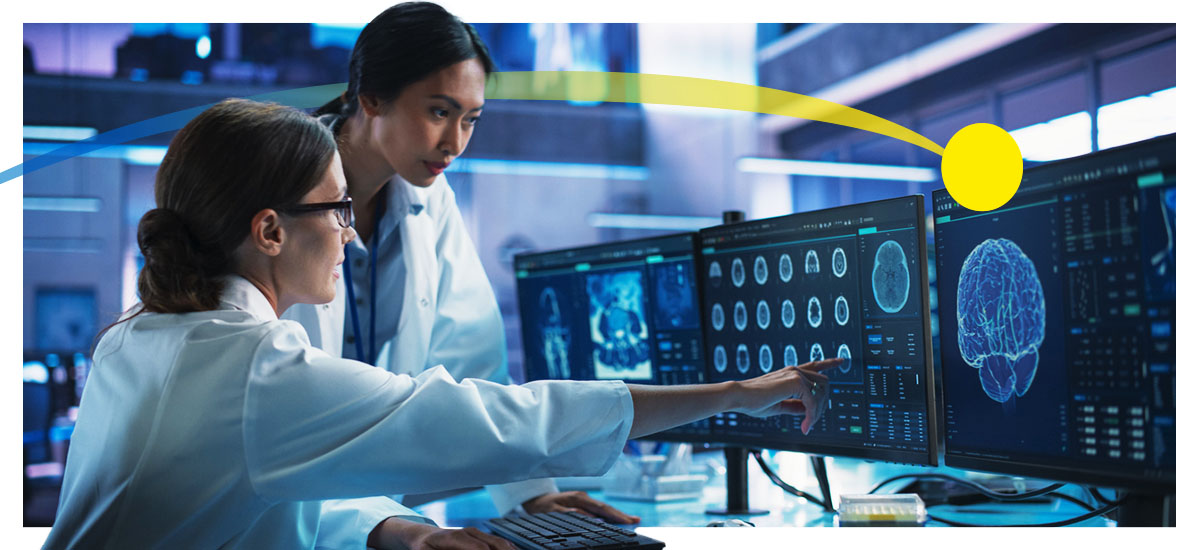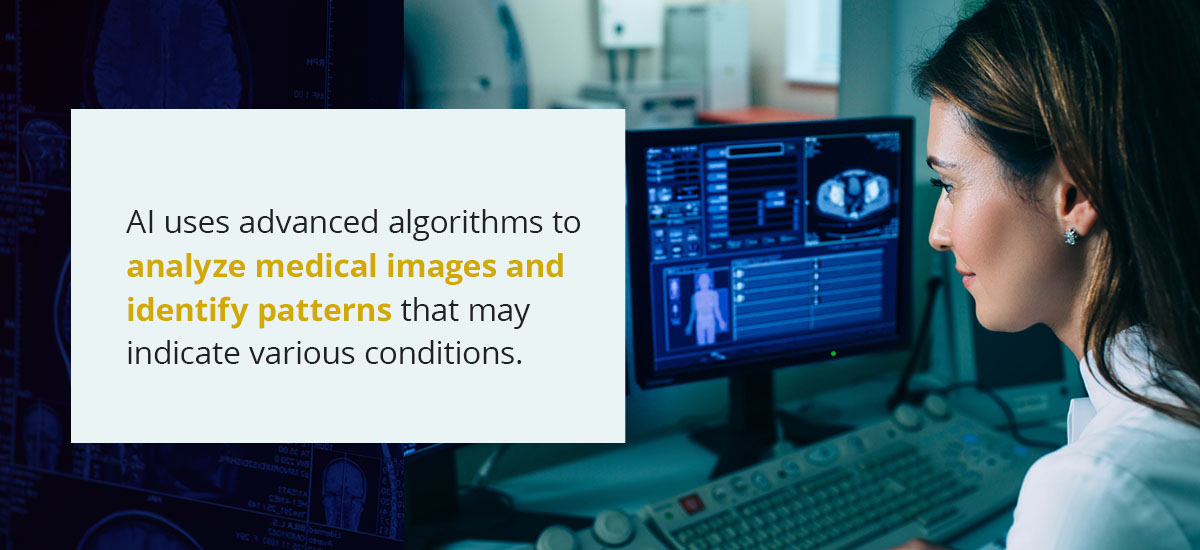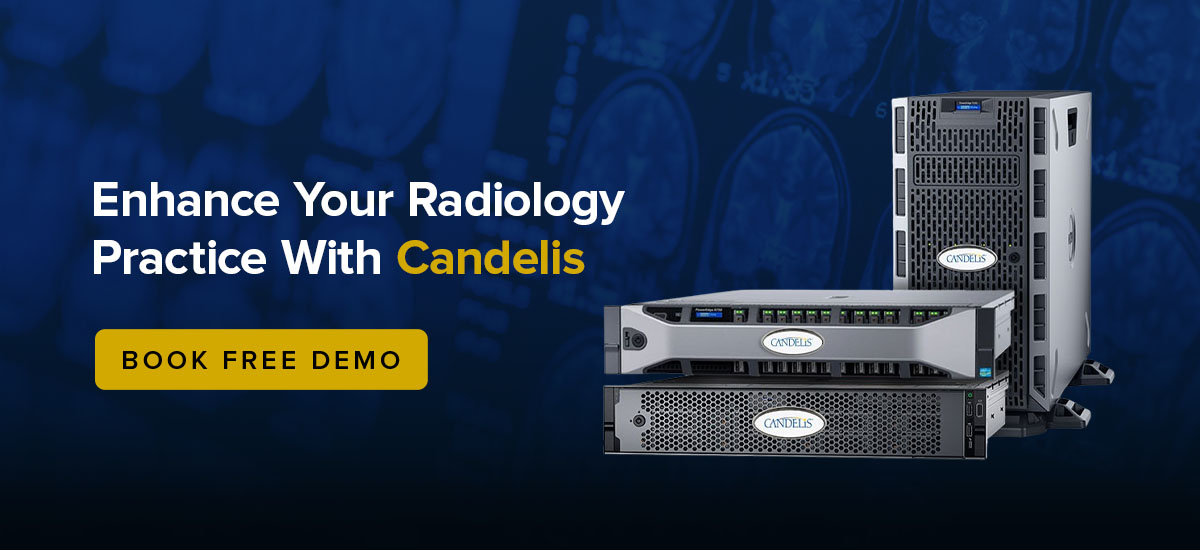How Is AI Leveraged in Radiology?

The integration of artificial intelligence (AI) in radiology has transformed the practice and delivery of healthcare in the field. As AI capabilities continue to develop, radiologists find more ways to leverage this technology to improve various processes, from image analysis and interpretation to routine tasks.
Like every other field that AI has infiltrated, concerns about the technology replacing professionals exist. However, AI should be used as a tool alongside human expertise to empower radiologists to make informed decisions and drive better patient outcomes. This guide will explore how AI is leveraged in radiology.
How Is AI Leveraged in Radiology Today?
The rapid adoption of AI in radiology aligns with a growing need for accuracy and efficiency in diagnostic imaging and the shortage of radiologists. A look at AI applications can provide a better understanding of how healthcare professionals currently use this technology to advance their processes.
Image Acquisition
AI accelerates image acquisition while maintaining or enhancing image quality. It helps radiologists obtain optimal patient positioning and minimize image degradation from patient motion. The technology facilitates clear, accurate scans even when patients move.
Furthermore, AI uses advanced processing techniques to remove noise, enhance contrast and optimize image details. The improved image quality aids in better diagnosis and patient care.
Image Analysis
One of the primary uses for AI in radiology healthcare is image analysis. The technology leverages advanced machine-learning algorithms to analyze and interpret medical images, such as X-rays, CT scans and MRIs. These algorithms are trained on vast databases, which enables them to identify patterns and anomalies with high accuracy and efficiency.
AI models can assist radiologists by automating the detection of potential tumors or fractures, often reducing the time required for analysis. They aid in faster diagnosis and treatment planning.
Image Interpretation

Radiologists also leverage AI to enhance image interpretation. AI uses advanced algorithms to analyze medical images and identify patterns that may indicate various conditions. Beyond mere identification, AI models assess disease progression and predict patient outcomes by comparing current images with historical data. They provide diagnostic suggestions and probabilities that help radiologists make informed decisions.
AI assists in understanding the clinical significance of abnormalities they detect. As a result, they offer a more comprehensive evaluation of a patient's health status. Radiologists can enhance patient care through timely and informed interventions.
What Are the Benefits of AI in Radiology?
The capabilities of AI systems in radiology show promise and have improved various aspects of the field. Here are some of the benefits of AI in radiology:
- Advanced detection: Leveraging AI in radiology, professionals can significantly enhance detection capabilities. The technology identifies patterns and abnormalities that may be overlooked by the human eye. It can also process and analyze large imaging datasets swiftly and accurately. These capabilities can increase the chances of early detection of diseases like cancer, which can improve patient outcomes.
- Optimized workflow: AI can streamline workflows by automating time-consuming, routine tasks like image sorting, data entry and preliminary assessments. Radiologists can focus their attention on complex cases that require human expertise. The result is increased efficiency in the diagnostic process and reduced turnaround times.
- Improved reporting: Radiologists often have a large number of images to report. AI-powered systems can generate reports based on the analysis of medical images. They structure critical findings into organized reports, reducing the chances of human error.
- Enhanced patient care: AI provides faster and more precise diagnostic information, which contributes to improved patient care. It can help identify risk factors, predict disease progression and suggest optimal treatment plans.
- Continuous learning: As AI models are exposed to more data, they continue to learn and improve performance. They learn from a large number of cases and adapt to each data point, leading to more accurate and reliable diagnoses over time. This continuous learning capability can help radiologists keep up with the evolving nature of medical knowledge and advancements in healthcare.
What Are the Cons of AI in Radiology?
While AI systems hold significant value in radiology healthcare, the technology still presents some drawbacks that can impact patient care. Some of the cons of AI in radiology include:
- Limited data quality: AI systems in radiology are just as effective as the data they are trained on. If the training data is limited, biased or not representative of a diverse patient population, the AI system can produce inaccurate results. Limited data quality can lead to misdiagnosis and discrepancies in care.
- Lack of human judgment: While AI can analyze and interpret medical images rapidly, it lacks the human element of intuition, experience, and a holistic understanding of the patient's condition. It may miss subtle signs or nuances that radiologists would consider in their diagnosis.
- Breach of privacy: AI requires access to vast amounts of personal patient data, which raises concerns about data privacy. Breaches of privacy can lead to unauthorized disclosure of sensitive health information. To ensure patient confidentiality, AI systems must be used ethically and adhere to strict privacy regulations like the Health Insurance Portability and Accountability Act (HIPAA).
Will AI Replace Radiologists?
AI has revolutionized radiology, offering a level of speed that surpasses human capabilities. This has caused concern about radiologists being replaced by AI systems. The short answer is no — AI will not be taking on radiologist roles and replacing humans any time soon. The technology's shortcomings, namely AI bias and lack of human judgment, emphasize the need for human evaluation to ensure the best results.
In some cases, a combination of AI systems and human expertise has been proven to have the best outcomes compared to AI working independently. It's more likely that radiologists will leverage AI to improve their processes than be replaced by this technology.
What Does the Future of Radiology With AI Look Like?
The future of radiology with AI is poised to be transformative. AI will enhance radiologists' capabilities by automating routine tasks, reducing errors and speeding up diagnostic processes. It involves a synergy of human expertise and AI technology.
Radiologists also have to undergo continuous professional development to stay ahead of AI advancements and learn how to integrate and maximize these tools for better outcomes.
Enhance Your Radiology Practice With Candelis

- Log in to post comments
